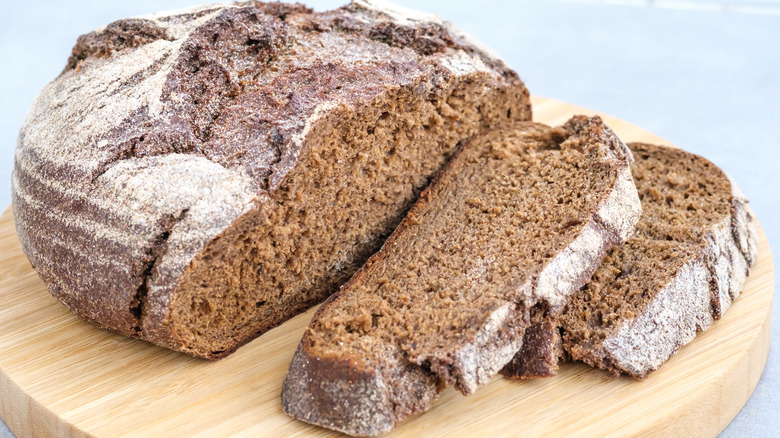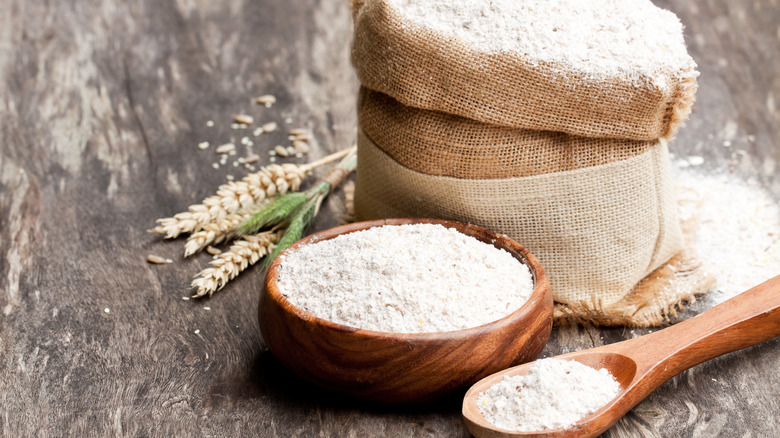The Flour Tip You Need For Fluffier Rye Bread
Rye bread — the hallmark loaf for the best Reuben sandwich – is characteristically more dense than loaves made with wheat flour, but it doesn't have to be so dense that it's flat and gummy with a super compact crumb. Nathan Myhrvold, founder of Modernist Cuisine and lead author of the "Modernist Cuisine" and "Modernist Bread" cookbook series, has well-researched advice for how to make fluffier rye bread at home. By choosing the right type of flour in your bread recipe, you can seriously alter the texture of your rye bread. Myhrvold explains, "If you want a fluffier 100% rye bread, you can't use a flour with bran and germ; opt for a light, finely milled rye flour that contains only endosperm."
Different types of rye flour are classified as light or white, medium, and dark. The primary differences between the flours lie in how much of the endosperm, bran, and germ (the components of a rye kernel) are used in the flour. Dark rye flours are considered whole grain since they use the entire rye kernel and result in a dense loaf that is also darker in color, like pumpernickel bread. Meanwhile, light or white rye flours have had the bran and germ removed and produce a lighter, more airy bread. Medium rye flour typically contains some of the bran but no germ. In addition to the bran, germ, and endosperm, Myhrvold points out that the grind of the flour (finely milled vs a more coarse flour) can determine the texture and density of the bread.
German rye flour vs. American rye flour
During his international research, Nathan Myhrvold and his team discovered that the volume and texture of rye bread differ in various countries. They found that the rye loaves they tasted in Germany, Austria, and the Nordic countries had a tender, fluffier crumb than rye bread in the United States. "When our team tried to re-create them in our lab kitchen," he says, "our loaves were super dense."
After some digging, the food scientist discovered that European and American rye flours have significant differences that affect the texture and density of the bread, including how the rye is grown and milled and how it creates structure in the dough. Specifically, they learned that German and Austrian flour makers mill their rye flour very finely and that "the finer the grind of the rye flour, the fluffier the baked bread will be." In addition to grinding their rye finely, German and Austrian flour producers also remove the bran and germ, which can reduce the bread's volume.
In addition, Myhrvold notes, "American rye flours, even the most finely ground, are milled more coarsely than their European counterparts and include the bran and the germ to some degree." While it may be a challenge to locate the exact type of rye flour used in other countries to produce, you can certainly boost the airiness of your bread by using light or white rye flour and looking for "finely ground" or "finely sifted" on the label.

